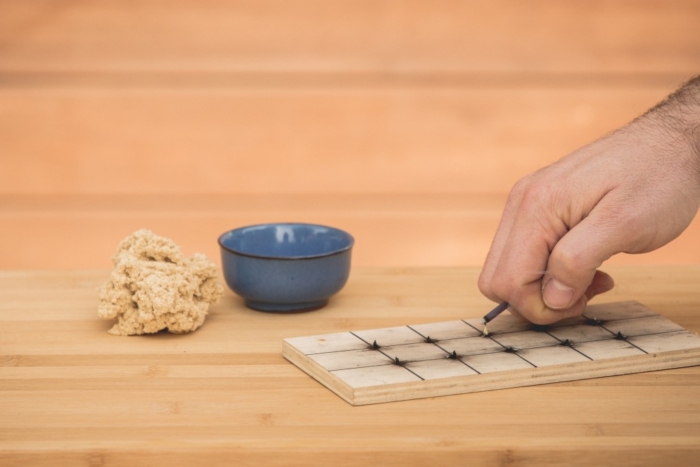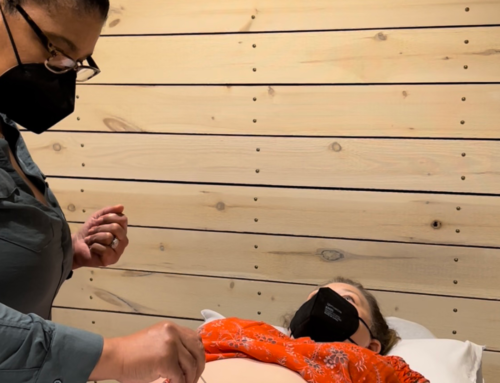Clients often comment about certain aromas wafting through the halls of Mend. You too may have wondered about a certain burning herbal scent. What you likely have been smelling is the use of an ancient therapy often used in conjunction with acupuncture known as moxa or moxibustion, which is the medical application of burning mugwort on or over an acupoint.
WHAT IS MUGWORT?
Mugwort is the common name for Folium Atemisiae Argyi. That’s a mouthful. The English word mugwort is derived from the Japanese word mugosa. Mugwort is prepared for external heat therapy by drying and aging the leaves of the plant. It is ground, sifted and sorted repeatedly until only the soft, fine fibers remain. The fibers can be made into a moxa stick to burn indirectly over an acupoint or into various sized cones and burned directly onto an acupoint.

Some of the origins of moxibustion date back to the 8th to 6th centuries BC associated with the the Brahmins of India. Historians postulate when primitive societies warmed themselves by the fire, they accidentally discovered that warming their abdomens relieved abdominal pain and distension.
WHAT MOXA CAN DO
Generations of doctors show through practical experience that moxa treats many disorders. In some cases, moxibustion is more effective than acupuncture or ingesting Chinese herbal medicine. The modern literature in Japan describes moxa in way that we are familiar with in the West – using the language of bioscience it integrates well with Western medicine. From the research in Japan, here are some of the researched benefits of moxibustion:
- Increases white blood cell count and the activity of white blood cells.
- Increases red blood cell count
- Creates anti-inflammatory effects by promoting blood coagulation and regenerating granulation tissues
- Inhibits spread of infection
- Promotes flow of qi and blood which improves circulation and relieves pain.
- Improves peristalsis (the autonomic muscle spasms in the intestines to move bowels)
- Balances the autonomic nervous system to aid in relaxation
- Promotes recovery from fatigue – from treating acute/chronic illness or from everyday life
WHEN MOXIBUSTION IS USED
The colder seasons and shorter days are approaching us. Acupuncturists tend to use moxibustion more frequently during these seasons, here’s why:
- To help build energy when we feel depleted (we have less energy with less daylight)
- To warm the body when we are cold (hello, colder winter months)
- To strengthen our body’s defenses when our immune system is weakened
- To dry out and clear phlegm
 DID YOU KNOW?
DID YOU KNOW?
Applying moxibustion on acupoint Bladder 67 (see image) aids in flipping a breech presentation baby in utero.
Moxibustion is a powerful healing modality in and of itself. One of the fundamental things that moxa can do is nourish life and prevent disease. It promotes health and slows down the aging process. So come on in and move your qi, become pain free and enjoy the toasty scent of moxa as you heal and let yourself be!
REFERENCES
Wilcox, L. (2009). Moxibustion: A modern clinical handbook. Boulder, CO: Blue Poppy.
Young, M. (2012). The moon over Matsushima: Insights into moxa and mugwort. United Kingdom: Godiva Books.
Smith, C.A. (2013) Moxibustion for breech presentation: significant new evidence. Acupuncture in Medicine 2013;31:5-6.






